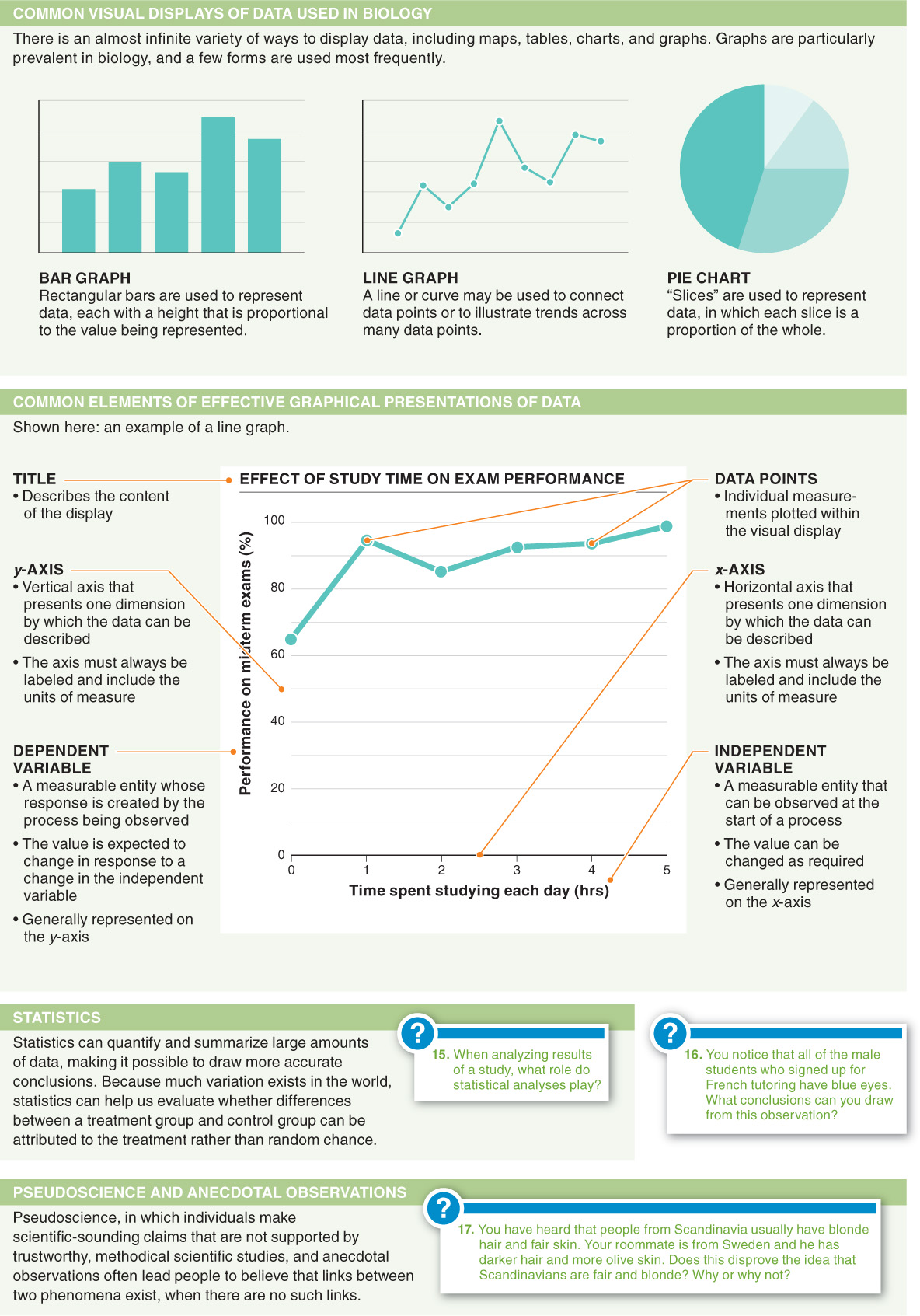1.15–1.18
1.15–Scientific thinking can help us make wise decisions.
Visual displays of data can help readers think about and compare data, ultimately helping them to synthesize the information and see useful patterns.

37
Q
Statistical methods make it possible to:
- a) prove that any hypothesis is true.
- b) determine how likely it is that certain results have occurred by chance.
- c) unambiguously learn the truth.
- d) reject any hypothesis.
- e) test non-
falsifiable hypotheses.

Anecdotal evidence:
- a) is the basis of scientific thinking.
- b) tends to be more reliable than data based on observations of large numbers of diverse individuals.
- c) is a necessary part of the scientific method.
- d) is often the only way to prove important causal links between two phenomena.
- e) can seem to reveal links between two phenomena, but the links do not actually exist.

A relationship between phenomena that has been established on the basis of large amounts of observational and experimental data is referred to as:
- a) a theory.
- b) a fact.
- c) an assumption.
- d) a conjecture.
- e) an experimental control.

Which of the following issues would be least helped by application of the scientific method?
- a) developing more effective high school curricula
- b) evaluating the relationship between violence in video games and criminal behavior in teens
- c) determining the most effective safety products for automobiles
- d) formulating public policy on euthanasia
- e) comparing the effectiveness of two potential antibiotics

What is the meaning of the statement “Correlation does not imply causation”?
- a) Just because two variables vary in a similar pattern does not mean that changing one variable causes a change in the other.
- b) It is not possible to demonstrate a correlation between two variables.
- c) When a change in one variable causes a change in another variable, the two variables are not necessarily related to each other.
- d) It is not possible to prove the cause of any natural phenomenon.
- e) Just because two variables vary in a similar pattern does not mean that they have a relationship to each other.
